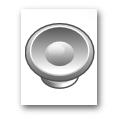Definify.com
Definition 2025
倭
倭
| ||||||
|---|---|---|---|---|---|---|
Translingual
Han character
倭 (radical 9 人+8, 10 strokes, cangjie input 人竹木女 (OHDV), four-corner 22244, composition ⿰亻委)
References
- KangXi: page 109, character 6
- Dai Kanwa Jiten: character 796
- Dae Jaweon: page 232, character 4
- Hanyu Da Zidian: volume 1, page 179, character 8
- Unihan data for U+502D
- Shuowen Jiezi: volume 15, page 46, character 18. http://kanji.zinbun.kyoto-u.ac.jp/db-machine/toho/html/A0200003.html
Chinese
|
simp. and trad. |
倭 | |
|---|---|---|
Glyph origin
| Historical forms of the character 倭 | ||
|---|---|---|
| ||
|
References:
Mostly from Richard Sears' Chinese Etymology site (authorisation),
|
| Characters in the same phonetic series (委) (Zhengzhang, 2003) | |
|---|---|
| Old Chinese | |
| 矮 | *qraːlʔ |
| 躷 | *qraːlʔ |
| 捼 | *noːl, *nuːl, *njul |
| 倭 | *qoːl, *qoːlʔ, *qrol |
| 涹 | *qoːl |
| 踒 | *qoːl |
| 餧 | *nuːlʔ, *qrols |
| 諉 | *nols, *qrolʔ |
| 痿 | *njol, *qrol |
| 萎 | *qrol, *qrols |
| 逶 | *qrol |
| 覣 | *qrol |
| 蜲 | *qrol, *qrolʔ |
| 委 | *qrol, *qrolʔ |
| 緌 | *njul |
Pronunciation
- Mandarin
- (Standard Chinese, Beijing)+
- Pinyin:
- Zhuyin: ㄨㄛ
- Wade-Giles: wo1
- Gwoyeu Romatzyh: uo
- IPA (key): /u̯ɔ⁵⁵/
-

- (Standard Chinese, Beijing)+
- Cantonese
- (Standard Cantonese, Guangzhou)+
- Jyutping: wai1, wai2, wo2, wo1
- Yale: wāi, wái, wó, wō
- Cantonese Pinyin: wai1, wai2, wo2, wo1
- IPA (key): /wɐi̯⁵⁵/, /wɐi̯³⁵/, /wɔː³⁵/, /wɔː⁵⁵/
- (Standard Cantonese, Guangzhou)+
- Min Nan
- (Hokkien)
- Pe̍h-ōe-jī: e
- Tâi-lô: e
- Phofsit Daibuun: ef
- IPA (Xiamen): /e⁴⁴/
- IPA (Quanzhou): /e³³/
- IPA (Zhangzhou): /e⁴⁴/
- IPA (Taipei): /e⁴⁴/
- IPA (Kaohsiung): /e⁴⁴/
- (Hokkien)
- Wu
- (Shanghainese)
- Wiktionary: u (T2)
- IPA (key): /v̩ʷ³⁴/
- (Shanghainese)
| Rime | |||
|---|---|---|---|
| Character | 倭 | 倭 | 倭 |
| Reading # | 1/3 | 2/3 | 3/3 |
| Initial (聲) | 影 (34) | 影 (34) | 影 (34) |
| Final (韻) | 支 (14) | 戈 (95) | 戈 (95) |
| Tone (調) | Level (Ø) | Level (Ø) | Rising (X) |
| Openness (開合) | Closed | Closed | Closed |
| Division (等) | Chongniu III | I | I |
| Fanqie | 於爲切 | 烏禾切 | 烏果切 |
| Reconstructions | |||
| Zhengzhang Shangfang |
/ʔˠiuᴇ/ | /ʔuɑ/ | /ʔuɑX/ |
| Pan Wuyun |
/ʔʷᵚiɛ/ | /ʔuɑ/ | /ʔuɑX/ |
| Shao Rongfen |
/ʔiuɛ/ | /ʔuɑ/ | /ʔuɑX/ |
| Edwin Pulleyblank |
/ʔjwiə̆/ | /ʔwa/ | /ʔwaX/ |
| Li Rong |
/ʔjue/ | /ʔuɑ/ | /ʔuɑX/ |
| Wang Li |
/ǐwe/ | /uɑ/ | /uɑX/ |
| Bernard Karlgren |
/ʔwie̯/ | /ʔuɑ/ | /ʔuɑX/ |
| Expected Mandarin Reflex |
wēi | wō | wǒ |
| Zhengzhang system (2003) | |||
|---|---|---|---|
| Character | 倭 | 倭 | 倭 |
| Reading # | 1/3 | 2/3 | 3/3 |
| No. | 12888 | 12891 | 12902 |
| Phonetic component |
委 | 委 | 委 |
| Rime group |
歌 | 歌 | 歌 |
| Rime subdivision |
3 | 3 | 3 |
| Corresponding MC rime |
倭 | 婐 | 逶 |
| Old Chinese |
/*qoːl/ | /*qoːlʔ/ | /*qrol/ |
| Notes | 見漢書 | ||
Definitions
倭
- dwarf
- (archaic) describes a hairstyle for women that was popular during the Han Dynasty in which the hair was gathered up in a lopsided bun.
- (historical, now pejorative) Japan; Yamato
- (historical, now pejorative) Japanese
- dwarfish, short
- (archaic) obedient
- (archaic) winding; meandering
See also
Compounds
|
|
|
Japanese
Kanji
倭
(“Jinmeiyō” kanji used for names)
Readings
Alternative forms
Pronunciation
Proper noun
倭 (hiragana やまと, romaji Yamato)

